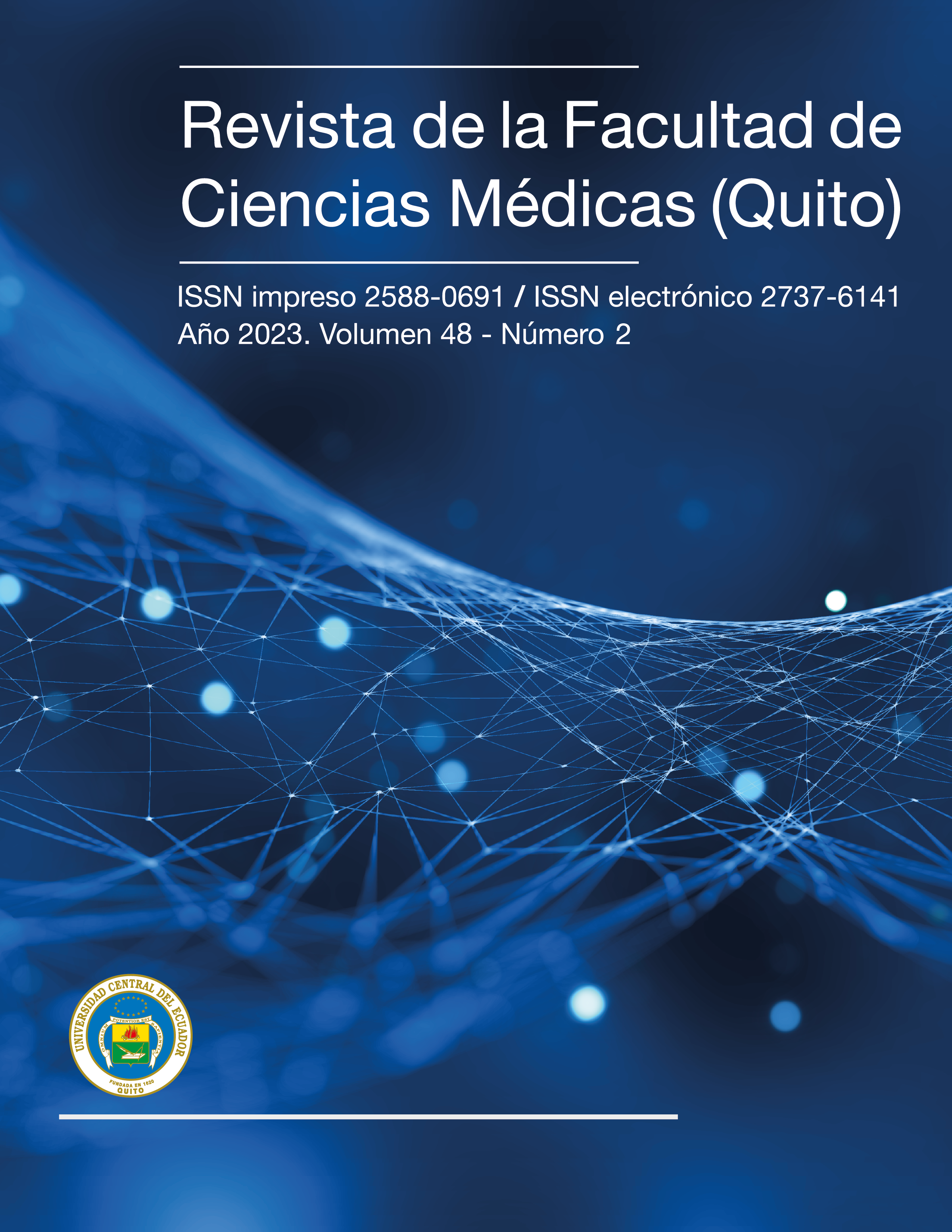Fever and rash as initial signs of systemic autoimmune disease. Case Report.
DOI:
https://doi.org/10.29166/rfcmq.v48i2.5821Keywords:
Lupus Erythematosus, Systemic, Fever, Exanthema, Autoimmune Diseases, CutaneousAbstract
Introduction: Systemic lupus erythematosus is an autoimmune disorder with a very wide spectrum of clinical presentations. It can affect multiple organs and systems however the disease mainly affects the skin with a variable presentation that can range from the classic butterfly-wing malar erythema to extensive lesions. It affects areas of the face such as the chin and forehead, the trunk, and the extremities. Patients can also present arthralgias, fever of unknown origin, and weight and hair loss. The cause of the fever and the presentation of a rash in the extremities are non-specific symptoms and they represent a challenge for the clinician when trying to find their origin, especially when presented separately, as it was in this case. The diagnosis of the cutaneous manifestations of systemic lupus erythematosus is based on the symptoms, histopathology, and immunohistology of the skin lesions. For the diagnosis of Systemic lupus erythematosus, the 2019 EULAR/ACR classification system is used, which indicates that a total score of ≥10 is required to classify systemic lupus erythematosus. For assessing the activity of Systemic lupus erythematosus, the SLEDAI scale is applied, which indicates that a score of less than 3 is compatible with (low activity), a score of 3-12 (moderate activity), and a score greater than 12 (severe activity).
Objective: To describe one of the diagnostic challenges for the clinician regarding the presentation of fever and rush in SLE or infection since both symptoms can manifest similarly in the two conditions. Therefore, the search for characteristics that allow us to differentiate SLE from infection is a need that must be addressed promptly.
Case presentation: The following case describes a 15-year-old female who presented with fever and skin rash separately for 1 month, as the initial manifestation of SLE. Additionally, the patient responded adequately to immunosuppressive treatment.
Conclusions and recommendations: Systemic lupus erythematosus underlies a wide spectrum of clinical presentations with repercussions at the level of organs and systems that can present with symptoms. In this case, fever and rash appeared separately within 1 month of evolution. Other symptoms such as weight loss, asthenia, and hair loss occurred upon admission of the patient. The diagnosis should be based on the exclusion of other pathologies, timely examinations, and adequate immunosuppressive treatment, as well as distinguishing whether the fever is due to an active infectious process or is secondary to the activity of systemic lupus erythematosus.
Downloads
Metrics
References
Bengtsson AA, Rönnblom L. Systemic lupus erythematosus: still a challenge for physicians. J Intern Med. 2017; 281:52-64
Galindo M, Molina R, Álvarez P. Systemic lupus erythematosus (I). Etiopathogenesis. Clinical manifestations. Natural history. Diagnostic tests. Differential diagnosis. ELSEVIER. 2017; 1429-1439
Uva L, Miguel D, Pinheiro C, Freitas j, Marques Gomes M, Filipe P. Cutaneous Manifestations of Systemic Lupus Erythematosus. Hindawi. July 2012; p. 1-12.
Lee HJ, Sinha AA. Cutaneous lupus erythematosus: understanding of clinical features, genetic basis, and pathobiology of disease guides therapeutic strategies. Autoimmunity 2006; 39:433.
Crispín C, Stamatis C, Toth K, Lieberman A, Vasileios C, Yuang-Taung J, George C. Pathogenesis of human systemic lupus erythematosus: recent advances. NYSCF. February 2010; p. 47-57.
Schur P, Bevra H , Pisetsky D, Siobhan M. Epidemiology and pathogenesis of systemic lupus erythematosus. UpToDate. February 2023; p. 1-15.
Tomic-Lucic A, Petrovic R, Radak-Perovic M, Milovanovic D, Milovanovic J, Zivanovic S, Pantovic S, Veselinovic M. Late-onset systemic lupus erythematosus: clinical features, course, and prognosis. Springer. March 2013; p. pages1053–1058.
Sánchez-Schmidt M,Pujol-Vallverdú R. Diagnóstico diferencial de las lesiones cutáneas en el lupus eritematoso. ELSEVIER. Marzo 2006; p. 12-26.
Kuhn A, Bonsmann G, Joachim Anders H, Herzer P, Tenbrock K, Schneider M.The Diagnosis and Treatment of Systemic Lupus Erythematosus. NIH. June 2015; p. 423–432.
Fanouriakis A, Tziolos N, Bertsias G, Boumpas D. Update οn the diagnosis and management of systemic lupus erythematosus. BMJ Journals. December 2020; p. 14-25.
Walling Hobart W, Sontheimer Richard D. Cutaneous Lupus Erythematosus. Springer. September 2012; p. pages365–381.
Zhou WWJ, Yang CD. The causes and clinical significance of fever in systemic lupus erythematosus: a retrospective study of 487 hospitalized patients. SAGE Journals. July 2009.
Borg E J, Horst G, Limburg P C, Rijswijk M H, Kallenberg CG. C-reactive protein levels during disease exacerbations and infections in systemic lupus erythematosus: a prospective longitudinal study. NIH. December 1990; p. 1642-8.
Reyes M V, Vanaclocha SebastiáN F. Treatment of resistant cutaneous lupus erythematosus. ELSEVIER. September 2012; p. 77-84.
Kandane-Rathnayake R, Louthrenoo W, Golder V, Shue-Fen L, Yeong-Jian J, Lateef A, Cho J, Zhanguo L, Yuan An, Hamijoyo L, et al. independent associations of lymphopenia and neutropenia in patients with systemic lupus erythematosus: a longitudinal, multinational study. Rheumatology. November 2021; p. 5185–5193.
Yang Jung J, Chang-Hee S. Infection in systemic lupus erythematosus, similarities, and differences with lupus flare. NIH. May 2017; p. 429–438.
Levy DM. Childhood-onset systemic lupus erythematosus (SLE): Clinical manifestations and diagnosis. UpToDate. June 2022.
Gonzales LA, Pons-Estel GJ. Understanding Risk Factors for Poor Outcomes in a Multiethnic Longitudinal Cohort: The LUMINA (Lupus in Minorities: Nature vs. Nurture) Experience (LUMINA LXXXII). NIH. October 2020.
Downloads
Published
How to Cite
Issue
Section
License
Copyright (c) 2023 Daniel Falconi, Ricardo Bedon

This work is licensed under a Creative Commons Attribution-NonCommercial-NoDerivatives 4.0 International License.











